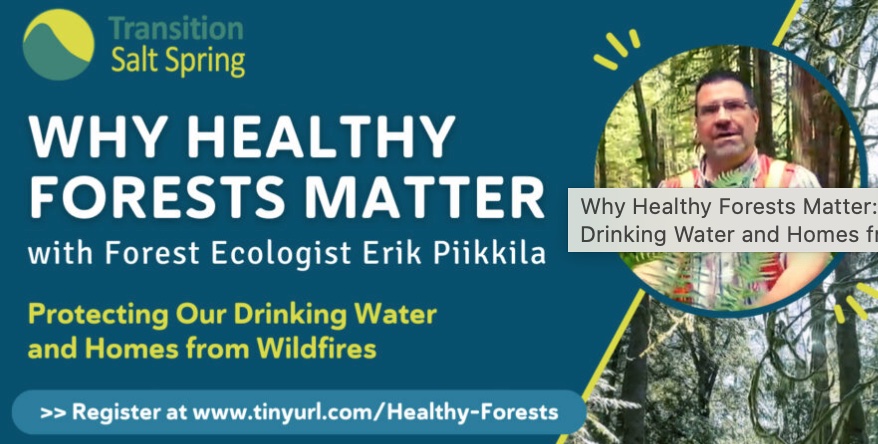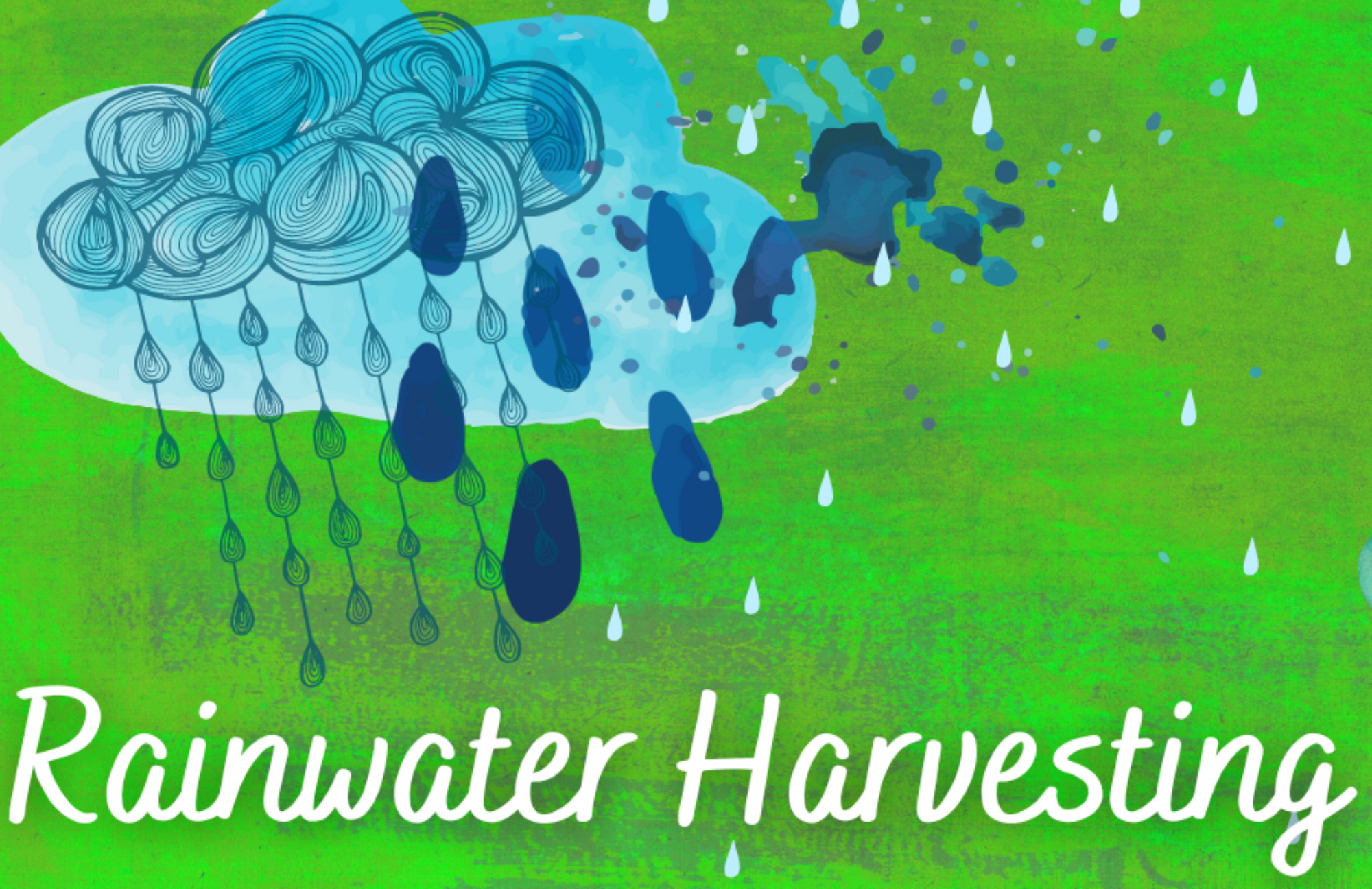Water Farmers in the Salish Sea
Today is World Water Day – March 22nd
Be a Water Farmer!
Please Take the Rainwater Storage Challenge!
The Challenge goal on Salt Spring is 3 million gallons of water saved by 2026!
Why Should The Gulf Islands Be “Water Farms”?
The Gulf Islands are ecosystems first and foremost, critical and integral homes for species without which life-as-we’ve-known-it will cease to function. Every ecosystem is a type of sponge or “water farm”, yet so many have been impacted by development pressure, invasive animal and plant species and economic pressures. Forests of today are much less sponge-like – releasing torrents of freshwater to the oceans and the atmosphere rather than holding water close to Earth’s bosom.
Coast Salish (aka Gulf Island) ecosystems of yore co-evolved with Indigenous human communities into several distinct and well-characterized coastal rainforest natural habitats suited to humidity, sponge-like water- absorbing forests with species of many ages and types from spring ephemerals to tall shrubby understories and towering canopy tree species. These forests buffered against intermittent, regular annual droughts. Several of these micro-ecosystems feature specific “teams” of drought-adapted bacteria, lichens, insects and plant and animal species that exist only in the Salish Sea – all because of variation in soil, slope, aspect, geology, precipitation and climate, as well as human stewardship and modification.
Historically, the Salish Sea “rain shadow” precipitation patterns did include seasonal droughts and winter “rainy periods”, but all that is changing rapidly: annual droughts are more intense, summer temperatures hotter, winter rains come in discrete downpours as handfuls of daily events that used to arrive over dozens of days and soak in slowly.
Now you know why not only our local food producers (bless them), but every resident in the Salish Sea should become a “water farmer”, working with the climate patterns and the landscape.
What does a “Water Farmer” do?
A Water Farmer looks at where they live and asks these questions regularly, then takes action to create solutions:
- How can I capture, store, slow, sink and spread water to halt the torrential race to the sea?
- Is there a way I can direct water to not only food or horticultural plantings, but to established trees and to entire forest soil regions where I live?
- Where does water naturally puddle?
- How does water travel from high to low rather quickly? How can I slow it and help the plants and animals to use it many times on its way to the ocean?
- Where can I create habitat in the shade with wet leaves, stumps and branches to encourage soil and water retention for plant and animal life while also reducing fire risk?
TAKE ACTION!
Learn How You Can Be a Water Farmer, Too!
We can do this, together! All Salt Spring Island residents have a stake in harvesting and using rainwater for some or all of their freshwater needs.
- There is an abundance of rain to harvest December – April
- There is an annual summer drought when sufficient freshwater supplies for our population and tourism does not exist from traditional sources (lakes, streams, groundwater wells are finite)
- Winter rainfall (80% of annual) can be stored for use during summer drought
- Nearly all outdoor uses do not need to use treated/potable water
- Approx. 2 square metres of roof area can harvest enough rain to store and serve 10 square metres of garden
1 mm on 1 sq m of roof = 1 L
Become a water farmer this year: Take the Rainwater Storage Challenge; Attend Transition Salt Spring (SSIWPA-member)’s learning events and apply new knowledge, such as:
Join local Forest Ecologist, Erik Pikkila of Yellow Point Ecological Society at a Transition Salt Spring Society Event to learn about healthy forests and watersheds:
webinar – May 24
field trip – May 28
Register here: https://transitionsaltspring.com/why-healthy-forests-matter-fire-prevention-drinking-water/
Some items we’ll learn about with Erik:
- Why are forests connected to our drinking water?
- Why should we care about doing anything to foster healthy forests?
- What are the warning signs of unhealthy forests?
- How can we learn from First Nations’ Traditional Ecological Knowledge to better manage our forests?
Rainwater Resources:
SSIWPA Video – Harvesting the Rain for Outdoor use
SSIWPA news post about drought
Visit our SSIWPA Rain Resources Blog:
https://www.ssiwpa.org/category/rain-resources/
Feature image photo credit: Todd Carnahan, Glenora Trails, Cowichan River

